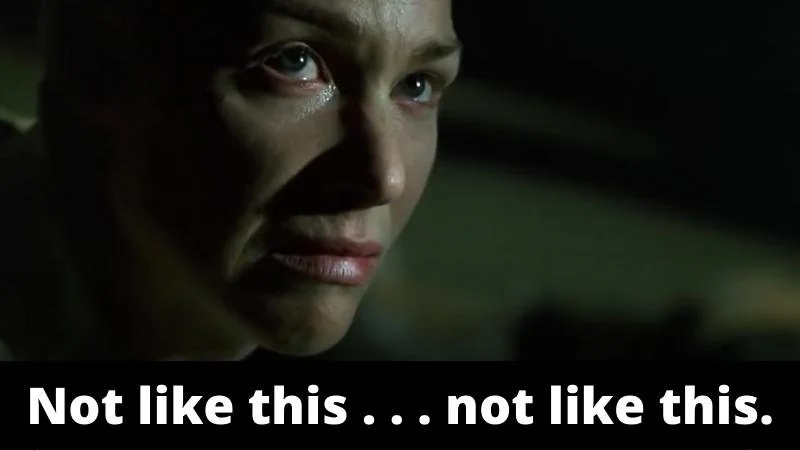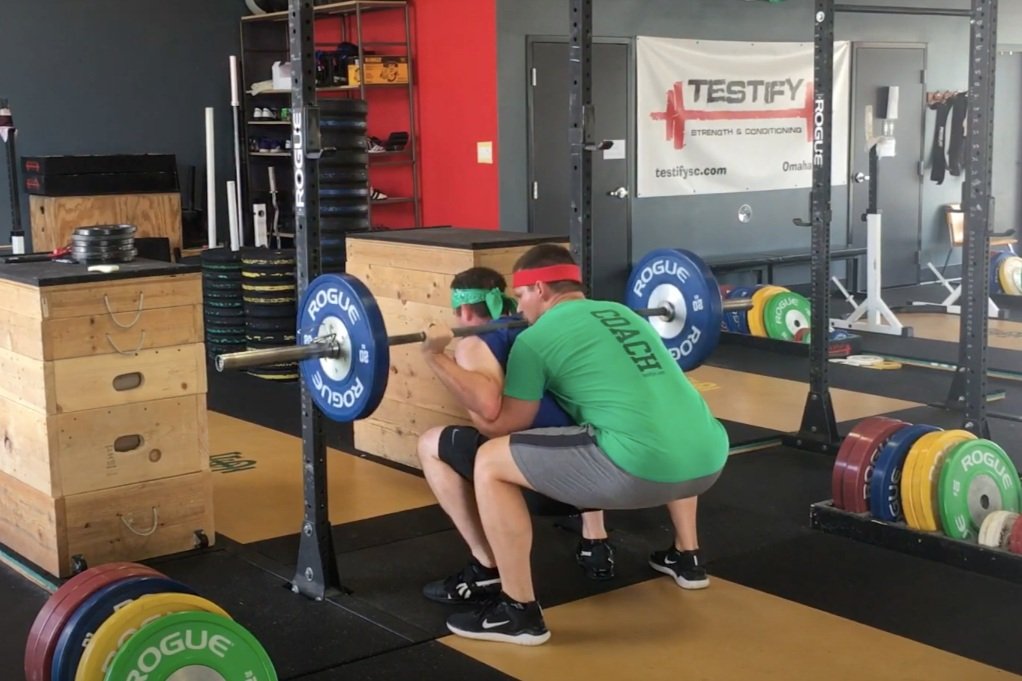Spotting the Squat: Don't Make These Mistakes!
/Spotting the squat is important, but it’s often done terribly and awkwardly, so let’s briefly discuss how NOT to spot the squat.
Don’t Space Out.
This isn’t the time for selfies or catching up on your pleasure reading. You need to keep your hands off the barbell unless it moves in a direction other than upward, but you still need to be available and attentive throughout the entire set.
A missed rep can happen quickly, especially if it’s due to a loss of balance, so be ready.
figure 1: Don’t Do This. (note the crooked barbell)
Don’t Touch the Bar . . . When the Lifter is Walking It Back In.
At the end of a successful set, do not try to help the lifter get the bar back to the hooks (Figure 1). By touching the bar, you’ll simply cause the lifter to be uneven (because you and the other spotter will not provide equal amounts of assistance) and possibly miss one or both of the hooks.
At the end of a set, the lifter already squatted the weight on his own - he can certainly walk it back on his own. Spotters should simply be present as the bar contacts the uprights to make sure that the bar does not bounce back from the rack.
figure 2: Don’t be like these fools.
No 1-Person Spots
Spotting the squat is performed by two people - never one person. Spotting the squat from behind the lifter is awkward at best and dangerous at worst as the spotter is in a terrible position to handle a heavy load should the lifter fail (Figure 2).
When setting up to spot, the spotter on the lifter’s left should have his left foot forward, and the spotter on the lifter’s right should have his right foot forward - this way, you are both facing the lifter as well as each other.
Keep your hands off the bar unless the bar moves in a direction other than up - any rep touched by you cannot be counted by the lifter. However, if the lifter does need assistance, you need to provide it, and you do so by spotting the bar with the crook of your elbow, and both hands will help by grabbing the plate (Figure 3). At this point, the lifter and the spotters together will lift the bar and take it back to the hooks (the lifter should NEVER abandon the bar).
Figure 3: The correct way to spot a failed rep
As always, we hope this helps you get stronger and live better.
(Some links may be affiliate links. As an Amazon Associate, Testify earns from qualifying purchases.)



